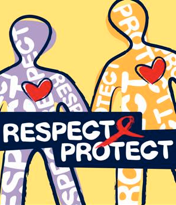Could RT technology help close the EID gap?
 July 22, 2012
July 22, 2012 As the CEO of a life science company I am constantly amazed at the resourcefulness and tenacity of people in this field and I am very proud to be a part of it. When it comes to our area of HIV diagnostics, few issues are as compelling in this regard as the ongoing struggle to provide proper HIV diagnostics to infants often referred to as HIV early infant diagnosis or EID.
 HIV positive mothers can pass the infection to their children before, during, or after birth via breast milk. Mother-to-child transmission (MTCT) of HIV-1 results in approximately 370,000 infant infections worldwide each year. 2.5 million children were living with HIV at the end of 2009, with 90% in Sub-Saharan Africa. The good news is that researchers Dr. Avy Violari and Prof. Mark Cotton have shown that if an HIV-positive infant is started on antiretroviral drugs before 12 weeks of age we can reduce mortality by 76% and disease progression by 75% compared to those who start treatment later. The problem for these infants today isn’t a matter of access to antiretroviral drugs (ARVs). It’s a matter of access to an HIV diagnostic test.
HIV positive mothers can pass the infection to their children before, during, or after birth via breast milk. Mother-to-child transmission (MTCT) of HIV-1 results in approximately 370,000 infant infections worldwide each year. 2.5 million children were living with HIV at the end of 2009, with 90% in Sub-Saharan Africa. The good news is that researchers Dr. Avy Violari and Prof. Mark Cotton have shown that if an HIV-positive infant is started on antiretroviral drugs before 12 weeks of age we can reduce mortality by 76% and disease progression by 75% compared to those who start treatment later. The problem for these infants today isn’t a matter of access to antiretroviral drugs (ARVs). It’s a matter of access to an HIV diagnostic test.
Diagnostics for adults is a fairly routine affair even in resource-limited settings, thanks to antibody testing. These types of tests are often referred to as “rapid tests” because they provide on-the-spot results. They work by measuring HIV-specific antibodies in the blood and making a yes/no determination of infection from there. They are accurate, easy to administer and inexpensive. In fact the US FDA has recently approved a do-it-yourself home test to diagnose HIV infection.
However, antibody testing doesn’t work on children under 18 months of age. That’s because up to that age the child still has its mother's antibodies in its blood and the test can’t tell if they are from the mother or the child. Therefore, in developed countries early diagnosis is made using the HIV DNA PCR assay, which can be used at six weeks of age. Access to HIV DNA PCR tests is restricted in resource-limited countries because they require centralized laboratories and specialized equipment. Additionally, DNA PCR produces false negative results for unrecognized HIV-1 subtypes or HIV-2.

The sad consequence of waiting to diagnose children is increased mortality and disease progression. In some regions of Africa the coverage rate for testing a child younger than 8 weeks from an HIV-positive mother is less than 4%. 1 out of 10 pregnant women in Sub-Saharan Africa are infected with HIV and 1 in 3 children born to these mothers will contract HIV. At 6 months of age, the probability of death after starting ART is 7.8% if the HIV-infected infant is already showing signs of immune deficiency (e.g. low CD4 count) but only 1.8% if the infant is asymptomatic. Most of those deaths will occur by the age of 12 months. In India, we see a similar situation.
To be clear, Cavidi does NOT market an EID test or any test to determine if a person is infected with HIV. Our ExaVir™ Load test is intended to monitor patients who have been diagnosed with other products. However, several enterprising researchers have realized the promise of RT technology for EID and have conducted independent EID studies using our RT-based monitoring test as an HIV EID tool. There is now a convincing body of evidence suggesting that Cavidi’s RT-technology may provide an important key to expanding access for EID in resource-limited settings. One of these studies by Dr. Sivapalasingam of New York University found that among HIV-exposed infants younger than 18 months old, the RT assay performed as well as DNA PCR. In 55% of cases the RT assay diagnosed HIV infection 6 weeks earlier than the DNA PCR assay with the added benefit of being subtype independent. To quote from the paper:
“Our finding that a significant number of HIV infections are undiagnosed using DNA PCR testing at 6 weeks of age is important for several reasons. First, in resource-limited settings where access to medical care can be intermittent, accurate and early diagnosis of HIV when the child does present for care (during birth or routine immunization visits at 6 weeks) is especially critical. In a recent study conducted in Kenya, 65% of HIV-exposed infants were lost to follow-up by age 18 months, of whom 43% were lost to care by age 4 months. Therefore, if a 6-week DNA PCR test result is falsely negative, it is very likely that the child will not return for a repeat DNA PCR test or a confirmatory antibody test. An assay, such as the RT assay, that could detect infection soon after transmission occurs, such as at birth or 6 weeks, could dramatically increase the number of infected children initiated on ART."

Based on this research, I did a quick calculation on the impact an RT-based EID test could have: Assume you have 10,000 perinatally infected infants and detect all of them using an assay and start all 10,000 infants on antiretroviral therapy. Based on the 4% mortality rate reported by Violari et al., there would be 400 deaths. Based on the Sivapalasingam study, using DNA PCR alone at 6 weeks would have misdiagnosed 6,000 infants as HIV uninfected and therefore would not receive ART. In this group, there would be a total of 1,120 deaths (4% of 4,000 infants + 16% of 6,000 infants = 1,120). Therefore, using the RT assay at 6 weeks of age could lead to a 64% reduced mortality rate (720/1120) through better and earlier detection and treatment of HIV infection. Consider that HIV-1 results in approximately 370,000 new infant infections worldwide each year and you can begin to appreciate the benefits RT-technology can add.
I’d like to restate that the Cavidi ExaVir™Load test used in these studies is an HIV Viral Load monitoring test and is not approved for use as an HIV diagnostic test. However, the results of several studies indicate that the underlying RT-technology could provide several advantages over RNA-based tests and thus increase access to the test for tens of thousands of infants each year. In response to these promising studies we are currently seeking the funding required to adapt and re-label our current viral load test for possible use in EID. Your input is more than welcome on this. I’ll keep you posted on further developments.

John Reisky de Dubnic
CEO
Cavidi
 1 Comment | tagged
1 Comment | tagged  DNA PCR,
DNA PCR,  EID,
EID,  Early Infant Diagnosis,
Early Infant Diagnosis,  ExaVir,
ExaVir,  HIV,
HIV,  MTCT,
MTCT,  PCR,
PCR,  RT technology,
RT technology,  Resource limited setting in
Resource limited setting in  EID
EID 







